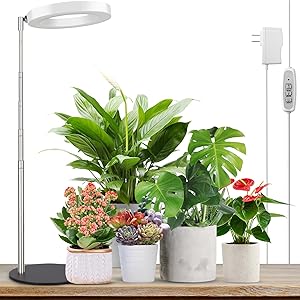As an avid gardener, I’ve often found myself pondering the intricacies of garden layout. One question that frequently pops up is, “How far should garden rows be apart?” The spacing between rows can significantly influence the health of your plants, the ease of maintenance, and ultimately, the yield of your garden. In this article, I’ll take you on a journey through the world of garden row spacing, providing you with insights that are both practical and grounded in research. Let’s dig in!
The Importance of Row Spacing
When it comes to gardening, spacing is not just a matter of aesthetics; it’s essential for plant health and productivity. Proper row spacing allows for adequate air circulation, sunlight penetration, and nutrient access, which are crucial for robust plant growth. Here are a few reasons why row spacing matters:
- Air Circulation: Proper spacing mitigates the risk of diseases caused by excess moisture.
- Sunlight Exposure: Ensures each plant receives sufficient light, promoting photosynthesis.
- Nutrient Access: Reduces competition among plants for soil nutrients and water.
- Ease of Maintenance: Facilitates easy access for tasks like weeding, pruning, and harvesting.
Factors Influencing Row Spacing
Determining the ideal spacing for your garden rows requires considering several factors. Here are the primary elements to keep in mind:
1. Type of Crop
The most crucial factor in determining row spacing is the type of crop you’re growing. Different plants have unique growth habits and requirements. For example:
- Leafy Greens: Crops like lettuce and spinach can be spaced closer together, typically about 12 to 18 inches apart.
- Root Vegetables: Carrots and radishes generally need 2 to 3 inches between plants, but rows can be spaced 12 to 18 inches apart.
- Vining Crops: Plants like cucumbers and squash require more space, often needing 36 inches between rows to allow for sprawling.
- Fruit Trees: These require significant spacing, often 10 to 20 feet apart depending on the variety.
2. Growth Habit
Understanding the growth habit of your plants is essential. Some plants grow vertically, while others spread out. For example, tomatoes can be staked to grow upright, allowing for closer row spacing, typically 24 to 36 inches. On the other hand, sprawling plants like zucchini need more space.
3. Garden Size and Layout
The size of your garden and its layout also play a vital role. In smaller gardens, maximizing space is key, so you might opt for tighter spacing. Conversely, larger gardens may benefit from wider rows to allow for better maintenance.
4. Soil Quality
The quality of your soil can affect how close you can plant. Rich, well-draining soil can support denser planting, while poor soil may require additional space to ensure plants get enough nutrients.
The Science of Spacing: Research and Statistics
Research has shown that proper row spacing can enhance productivity significantly. A study published in the “Journal of Agricultural Science” found that plants grown with optimal spacing produced 20% more yield compared to those planted too closely. This statistic underscores the importance of not just planting, but planting wisely.
Another fascinating statistic comes from a case study conducted by the University of California, which revealed that tomato plants grown with 24-inch spacing produced 30% more fruit than those planted at 12-inch intervals. This demonstrates the tangible benefits of adhering to recommended spacing guidelines.
General Guidelines for Row Spacing
While specific spacing will vary based on crop types and other factors, here are some general guidelines to consider:
- Vegetables: 18 to 36 inches apart, depending on the growth habit.
- Herbs: 12 to 18 inches apart.
- Flowers: 12 to 24 inches apart, depending on the variety.
- Fruit Trees: 10 to 20 feet apart, depending on size at maturity.
Creating Your Garden Layout
After considering the factors above, it’s time to create your garden layout. Here are some tips to help you get started:
- Plan Ahead: Sketch your garden layout on paper or use garden planning software to visualize your spacing.
- Sunlight Mapping: Identify areas of your garden that receive full sun, partial shade, and full shade, and plan your rows accordingly.
- Accessibility: Ensure that your rows are easily accessible for maintenance tasks.
- Crop Rotation: Plan for crop rotation by spacing rows that will allow different crops to be planted in future seasons.
Common Mistakes to Avoid
As I’ve navigated the world of gardening, I’ve encountered several common mistakes regarding row spacing. Here are some pitfalls to avoid:
- Ignoring Plant Size: Not considering the mature size of plants can lead to overcrowding.
- Inconsistent Spacing: Irregular spacing can lead to uneven growth and decreased yields.
- Not Accounting for Growth Habits: Failing to account for whether plants grow up or out can affect overall garden health.
Case Studies: Successful Garden Layouts
To illustrate the benefits of proper row spacing, I’d like to share a couple of case studies that highlight successful garden layouts:
Case Study 1: The Community Garden
A local community garden implemented a new layout strategy based on research. By spacing their rows 24 inches apart instead of the previous 12, they observed a 40% increase in vegetable yields over the season. Community members reported easier access for maintenance and harvesting, leading to a more fruitful gardening experience.
Case Study 2: The Urban Rooftop Garden
In a dense urban setting, a rooftop garden utilized vertical gardening techniques alongside appropriate row spacing. By spacing rows 18 inches apart and employing trellises for vining plants, they maximized their limited space and achieved a bountiful harvest of tomatoes, beans, and cucumbers, all while maintaining an aesthetically pleasing layout.
Conclusion: Your Path to a Thriving Garden
In conclusion, understanding how far garden rows should be apart is vital for cultivating a thriving garden. By taking into account the type of crops, their growth habits, soil quality, and your garden’s layout, you can optimize spacing for healthier plants and a more bountiful harvest. Remember, the science of spacing is not just about distance; it’s about creating an environment where your plants can thrive.
Whether you’re a seasoned gardener or just starting out, I encourage you to experiment with row spacing and observe the differences in your garden’s productivity. Happy gardening!
FAQs
1. What is the ideal spacing for tomato plants?
The ideal spacing for tomato plants is typically 24 to 36 inches between rows, allowing for adequate airflow and sunlight.
2. Can I plant different crops in the same row?
Yes, companion planting is a great technique where certain crops can benefit from planting together, but be mindful of their spacing needs.
3. How do I determine the right spacing for my specific plants?
Research the specific requirements for each crop you plan to grow, as spacing can vary significantly between different types of plants.
If you found this article helpful, please consider signing up for our newsletter for more gardening tips and tricks! Don’t forget to share this article with your friends and on social media to spread the knowledge about optimal garden spacing!
LORDEM Grow Light, LED Plant Light for Indoor Plants Growing, Full Spectrum Desk Growth Lamp with Automatic Timer for 4H/8H/12H, 4 Dimmable Levels, Height Adjustable 9.8"-30.6"
$21.99 (as of 13/11/2025 03:49 GMT -03:00 - More infoProduct prices and availability are accurate as of the date/time indicated and are subject to change. Any price and availability information displayed on [relevant Amazon Site(s), as applicable] at the time of purchase will apply to the purchase of this product.)
Sign up for our newsletter and stay up to date with exclusive news
that can transform your routine!




